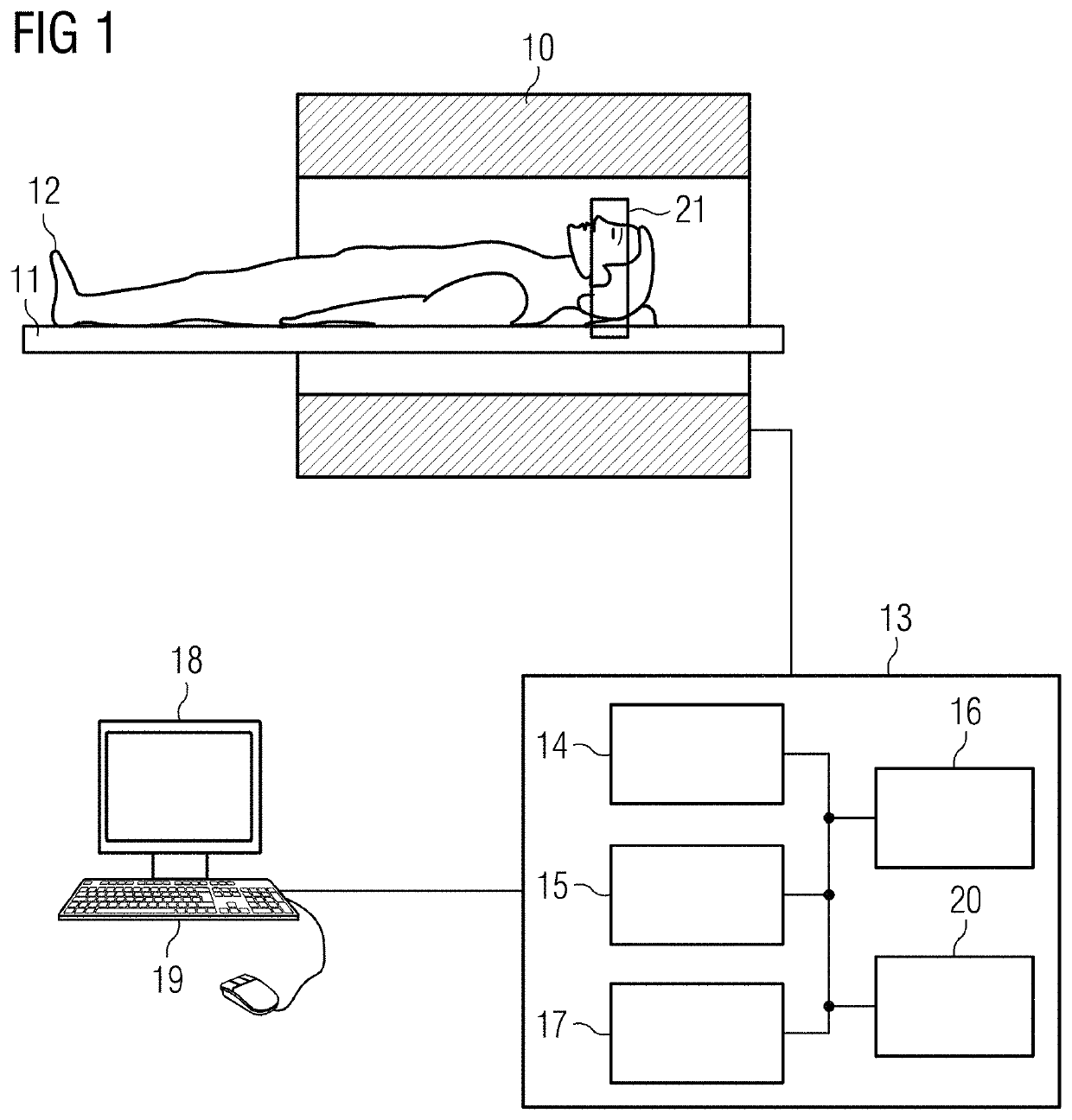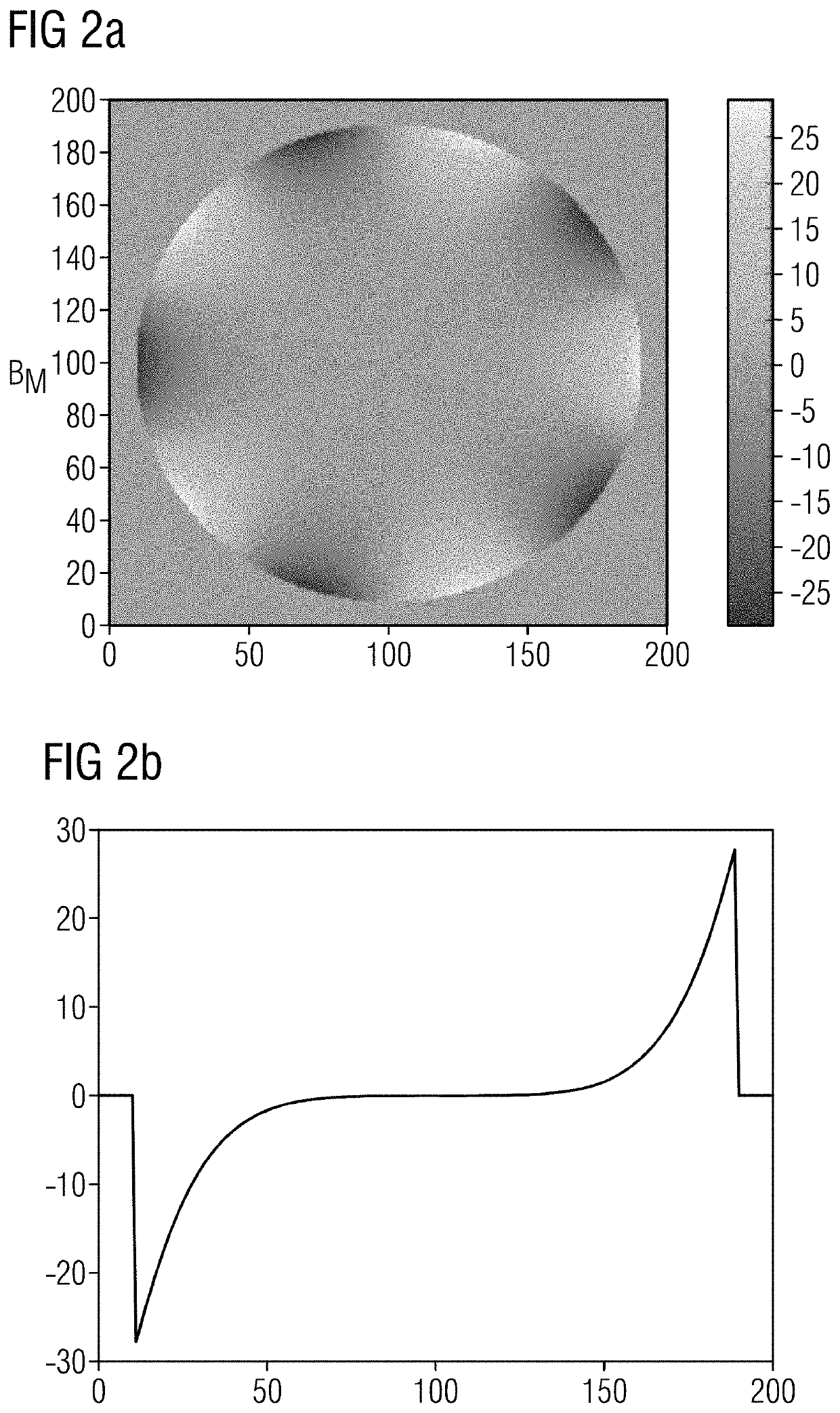Method and apparatus for determination of phase distributions in magnetic resonance imaging
a magnetic resonance imaging and phase distribution technology, applied in the field of magnetic resonance imaging phase distribution determination, can solve the problems of weak spatial variation in signal phase, unavoidable strong spatial variation, and limited value range, and achieve the effect of quick and efficient determination of phase differences, quick and efficient determination, and fast and efficient determination
- Summary
- Abstract
- Description
- Claims
- Application Information
AI Technical Summary
Benefits of technology
Problems solved by technology
Method used
Image
Examples
Embodiment Construction
[0037]FIG. 1 schematically shows an MR system with which the method for the determination of a phase distribution of a region of interest 21 according to the invention can be carried out.
[0038]A person 12 under examination, or more generally an object under examination, is in moved into the tunnel of the system, wherein a region of interest 21 is examined by the MR system. The magnetic resonance system has a scanner 10 with a basic field magnet that generates a basic magnetic field B0. The person 12 under examination, arranged on a bed 11, is moved into the center of the scanner 10 in order to record spatially encoded magnetic signals from the region of interest 21. Radiation of radio-frequency (RF) pulse sequences and switching of magnetic field gradients causes certain nuclear spins in the person 12 to be deflected from the magnetization generated by the basic field B0, out of the equilibrium position. Currents induced in RF reception coils, as the excited spins return to the equi...
PUM
 Login to View More
Login to View More Abstract
Description
Claims
Application Information
 Login to View More
Login to View More - R&D
- Intellectual Property
- Life Sciences
- Materials
- Tech Scout
- Unparalleled Data Quality
- Higher Quality Content
- 60% Fewer Hallucinations
Browse by: Latest US Patents, China's latest patents, Technical Efficacy Thesaurus, Application Domain, Technology Topic, Popular Technical Reports.
© 2025 PatSnap. All rights reserved.Legal|Privacy policy|Modern Slavery Act Transparency Statement|Sitemap|About US| Contact US: help@patsnap.com



